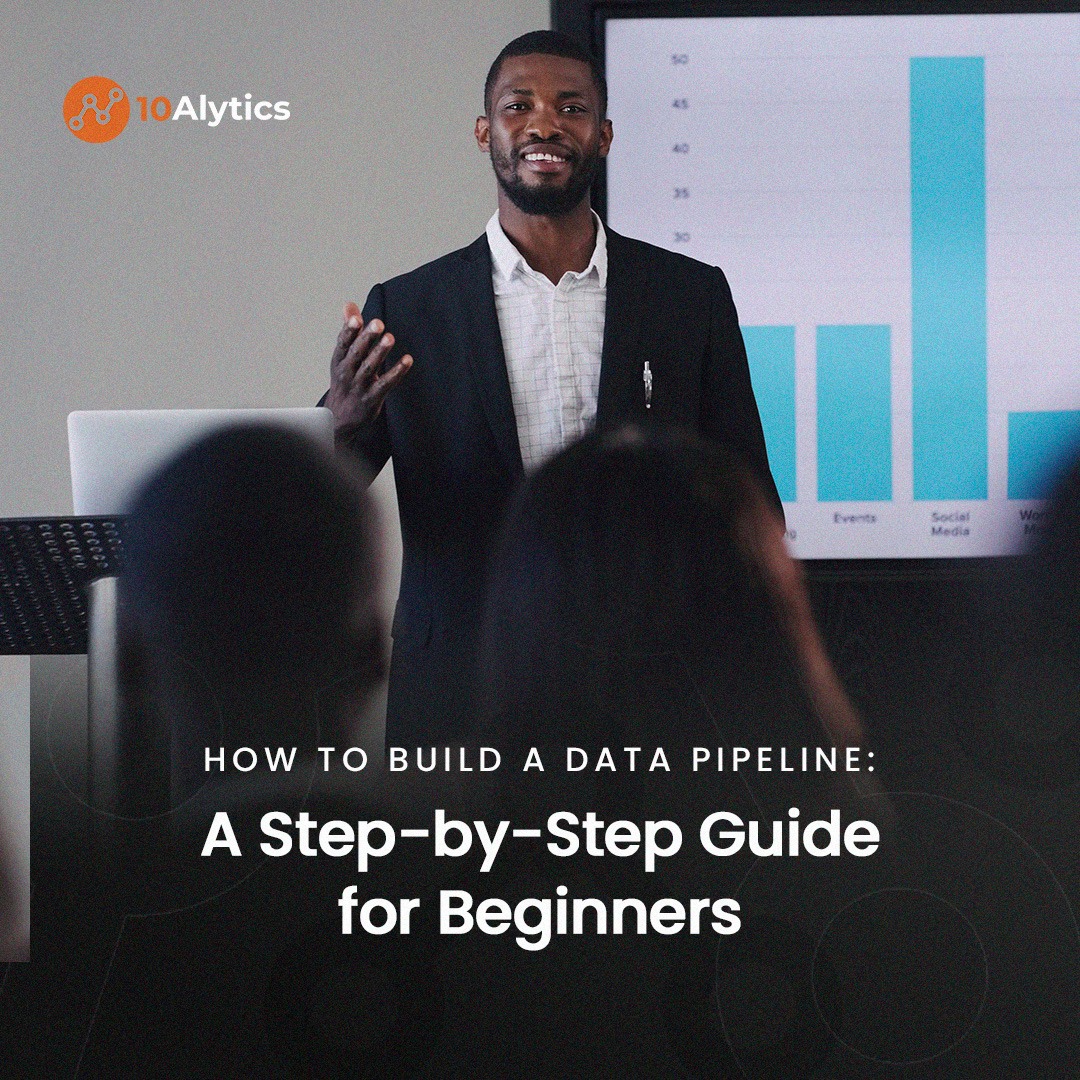About us How to Build a Data Pipeline: A Step-by-Step Guide for Beginners
How to Build a Data Pipeline: A Step-by-Step Guide for Beginners

How to Build a Data Pipeline: A Step-by-Step Guide for Beginners
How to Build a Data Pipeline: A Step-by-Step Guide for Beginners
Imagine embarking on a journey through a vibrant city, where your goal is to explore, gather information, and make sense of it all. Just like navigating through bustling streets, a data pipeline guides raw data from its source to its final destination, where it transforms into valuable insights. If you’re ready to build your own data pipeline, buckle up and let's embark on this exciting adventure together!
What is a Data Pipeline?
A data pipeline is a series of processes that collect, process, and deliver data from one system to another. It ensures that data is captured, cleaned, transformed, and stored for analysis in a seamless, timely, and reliable manner.

Why Do We Need Data Pipelines?
In our data-driven world, information flows from multiple sources such as customer transactions, social media interactions, or sensor readings. Building a well-designed data pipeline enables businesses to make informed decisions by efficiently managing and analyzing this data.
Step 1: Define Your Pipeline Goal
Every successful project begins with a well-defined objective. Identify the insights you seek from your data—such as customer behavior understanding, marketing strategy optimization, or impactful visualizations. This goal dictates the data sources to tap into and the necessary transformations to prepare your data for analysis and decision-making.
Step 2: Identify Data Sources
Data can be hidden in all sorts of places, like secret ingredients in a family recipe. Your sources might include:
- ➡ Databases: These are like your pantry staples. They hold structured data ready for extraction.
- ➡ Files and Spreadsheets: Think of these as your pre-measured cups of flour and sugar, ready to be added to the mix.
- ➡ APIs and Real-time Streams: These are the fresh ingredients arriving from the market, providing up-to-the-minute data for your pipeline.
Step 3: Data Extraction
It’s time to scoop out your data from its storage. Depending on your data source, you might be:
- ➡ Downloading Files: For spreadsheets or CSV files, simply download them to your workspace.
- ➡ Writing Scripts: For databases, you might need to write SQL queries to fetch the data.
- ➡ Using APIs: If your data comes from an API, use tools or code to make requests and pull the data in.
Step 4: Data Transformation
Now for the fun part! You need to transform your raw data into a usable form. This involves:
- ➡Cleaning: Remove duplicates, handle missing values, and correct errors. Think of this as sifting flour to get rid of lumps.
- ➡Enriching: Add additional information to make your data richer. Maybe sprinkle in some chocolate chips or nuts!
- ➡Transforming: Change the format or structure of your data. This could be converting dates into a standard format or aggregating sales data by month.
Step 5: Data Storage
Once your data is perfectly prepped, it’s time to store it in a convenient location where it’s ready for analysis. Options include:
- ➡ Data Warehouse: Ideal for structured, organized data. Think of this as neatly arranged cookie jars.
- ➡ Data Lake: Perfect for storing large volumes of raw, unstructured data. It’s like having a giant mixing bowl where everything goes in.
Step 6: Data Consumption
This is the moment we’ve all been waiting for! Your transformed data is ready to be consumed:
- ➡ Data Analysis: Dive into your data to uncover patterns and trends.
- ➡ Data Visualization: Create beautiful charts and graphs to tell your data’s story.
- ➡ Machine Learning: Use your data to train models that can predict future outcomes or automate tasks.
Step 7: Monitoring and Maintenance
Monitor your data pipeline consistently with alerts, logs, and performance tracking to maintain smooth, efficient operation. Promptly address any issues to uphold data integrity and reliability, ensuring continuous optimal performance and insights delivery.
Step 8: Scaling and Evolution
As your data grows and your needs change, your pipeline should scale to handle larger and more complex batches:
- ➡ Increase Processing Power: Add more servers or compute resources to handle larger volumes of data, just like getting a bigger oven to bake more cookies at once.
- ➡ Optimize Performance: Streamline your data transformations and improve efficiency. It’s like finding ways to mix your dough faster without compromising quality.
- ➡ Add New Data Sources: Incorporate new ingredients into your pipeline by connecting to additional data sources. It’s like experimenting with new cookie recipes to delight your customers.
Building and maintaining a data pipeline is a rewarding journey that empowers businesses with actionable insights. At 10Alytics, we’re dedicated to helping data enthusiasts like you master the art of data pipelines. Register with us to access a wealth of resources including expert tips, innovative strategies, and a supportive community. Join us and elevate your data skills to new heights!
